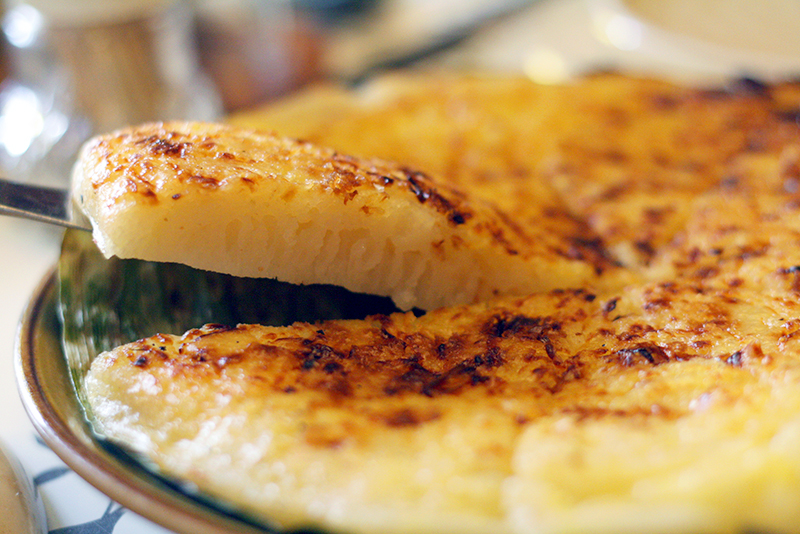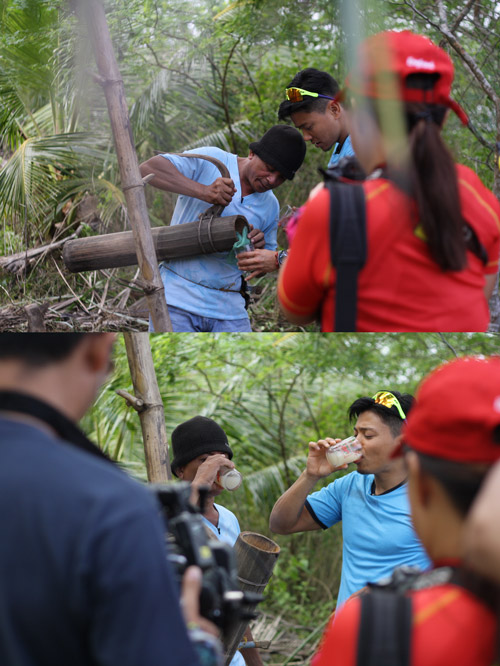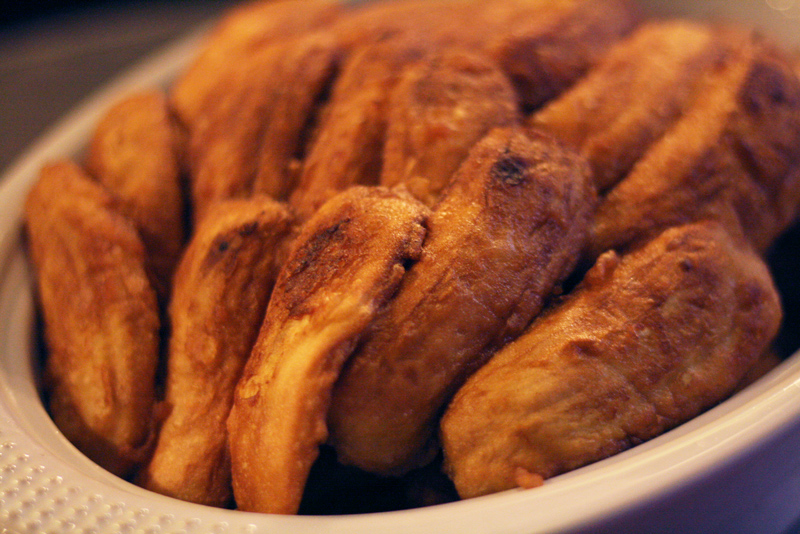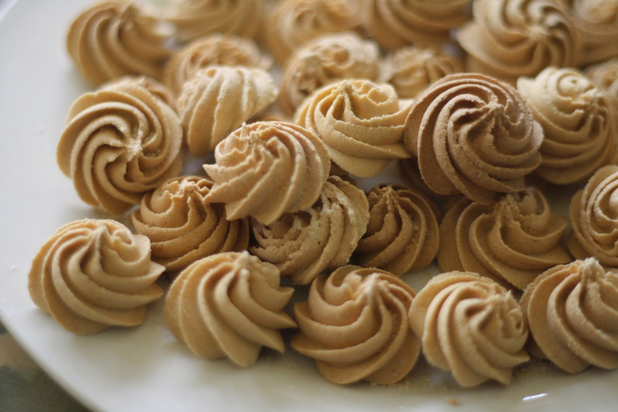Marinduque meals: Food from the heart of the Philippines
If the Philippines was a person, Marinduque—with its left-of-center geographical location and rounded shape—would be its heart. Two hours away from the Luzon mainland via RORO, the island province is most known for the Moriones Festival, a colorful celebration of Holy Week in which townspeople don rainbow-colored centurion costumes.
But even after Holy Week, there’s still much to see in Marinduque. As Drew Arellano and the ‘Biyahe ni Drew’ crew found out on a recent visit there, the food is worth a visit as well.
Bibingka
Ask any of the vendors in the Boac public market why their heavy snack is called ‘bibingkang lalaki’ (male bibingka), and they’ll giggle before telling you: “May itlog kasi, eh.”
Coconuts and their by-products are a main source of income in Marinduque. This carries over to the food. Bibingkang lalaki is made with tuba (coconut wine) instead of yeast, which keeps the inside of the bibingka moist and pudding-like.
Other kinds of bibingka found in Marinduque include bibingkang kanin, made with whole grains of rice, and the bibingkang pinahiran of Sta. Cruz municipality, on top of which vendors spread a thick, sweet syrup.
Tuba In Marinduque, as in many rural parts of the Philippines, tuba harvesters climb coconut trees, cut into the flower and leave a funnel and plastic bottle to collect the dripping sap. Each morning, they harvest the bottle full of a sweet, milky liquid known as tuba.
In Marinduque, as in many rural parts of the Philippines, tuba harvesters climb coconut trees, cut into the flower and leave a funnel and plastic bottle to collect the dripping sap. Each morning, they harvest the bottle full of a sweet, milky liquid known as tuba.
You can drink tuba, the locals told us, at any time of the day.
Tuba starts fermenting when you harvest it; as such, the alcohol content starts out very low and gets higher as the day goes on.
At 10:00 AM, Marinduqueños have the sweet, barely-alcoholic drink as a pick-me-upper before work. (This writer got to try freshly harvested tuba; I’d say it tasted like a mix of Yakult and vinegar.)
At 3:00 PM, the drink has enough kick to help farmers unwind from the stress of working the fields.
By 6:00 PM, the tuba becomes pungent and highly alcoholic. “Iniinom ‘yun para makatulog,” a tuba harvester joked.
Homestyle fast food
Fed up with the usual fast food? Good news—neither McDonald’s nor Jollibee have a single branch in Marinduque! Instead, the only franchised restaurant is the locally owned GoodChow Food Express.
GoodChow has diner fare like hamburgers, pizza and fried chicken, as well as Filipino comfort food such as mami. Because of their low prices—P95 for a one-third-pound cheeseburger—and unique items like malunggay soup and piniritong saging (no sugar coating, just a quick roll in rice flour), they’re a favorite among locals for quick snacks and catered events
There doesn’t seem to be a theme to the menu other than “yummy comfort food,” but nobody’s complaining!
Arrowroot cookies
Arrowroot cookies are the most popular pasalubong from Marinduque, and are made from the root crop that grows all over the island. In other parts of the Philippines, these cookies are known as ‘uraro.’ However, Marinduqueños use the name ‘arrowroot,’ which they pronounce briskly, the syllables mashing together: “Arurut!”
For a time, arrowroot flour was hard to come by. The traditional method of processing the root into flour, which involved crushing the root using a large rolling pin, was time-consuming and made the flour very expensive. With the help of the Department of Science and Technology, though, local Mita Rejano Reyes opened up the first modern arrowroot processing plant in Marinduque.
Rejano’s Bakery, which first belonged to Mita’s grandfather, sells what some call the best arrowroot cookies in Marinduque. Their prices range from P115 to P150 for a 250-gram tin of cookies, depending on packaging and the design of the cookies.
The basic cookie is a shaped like a rounded heart, but some tourists recommend their export-quality ones, which come in a clear glass bottle and have stiff, meringue-like ridges.
The flavor of Marinduque’s arrowroot cookies will be familiar to anyone who’s tried uraro in the past—mildly sweet with a touch of vanilla—but the stiff ridges add a nice crunch to contrast to the flaky center.
--
For more on Marinduque's food and culture, catch 'Biyahe Ni Drew' this Friday (March 22, 2013)—10 PM on GMA News TV 11.




